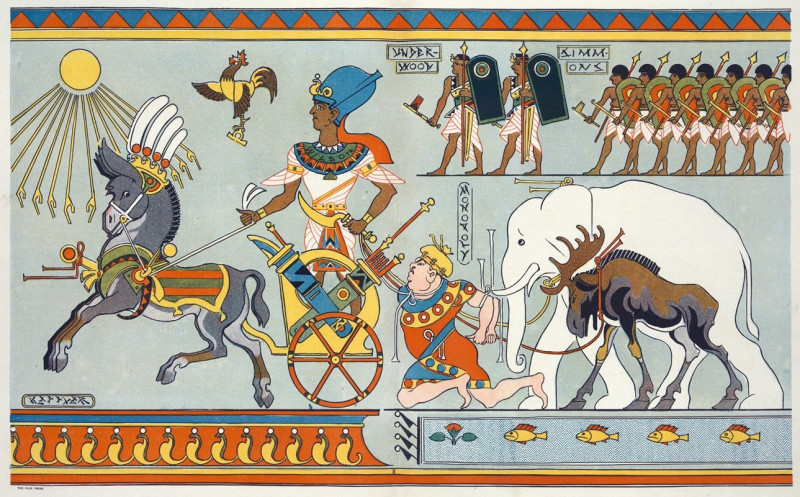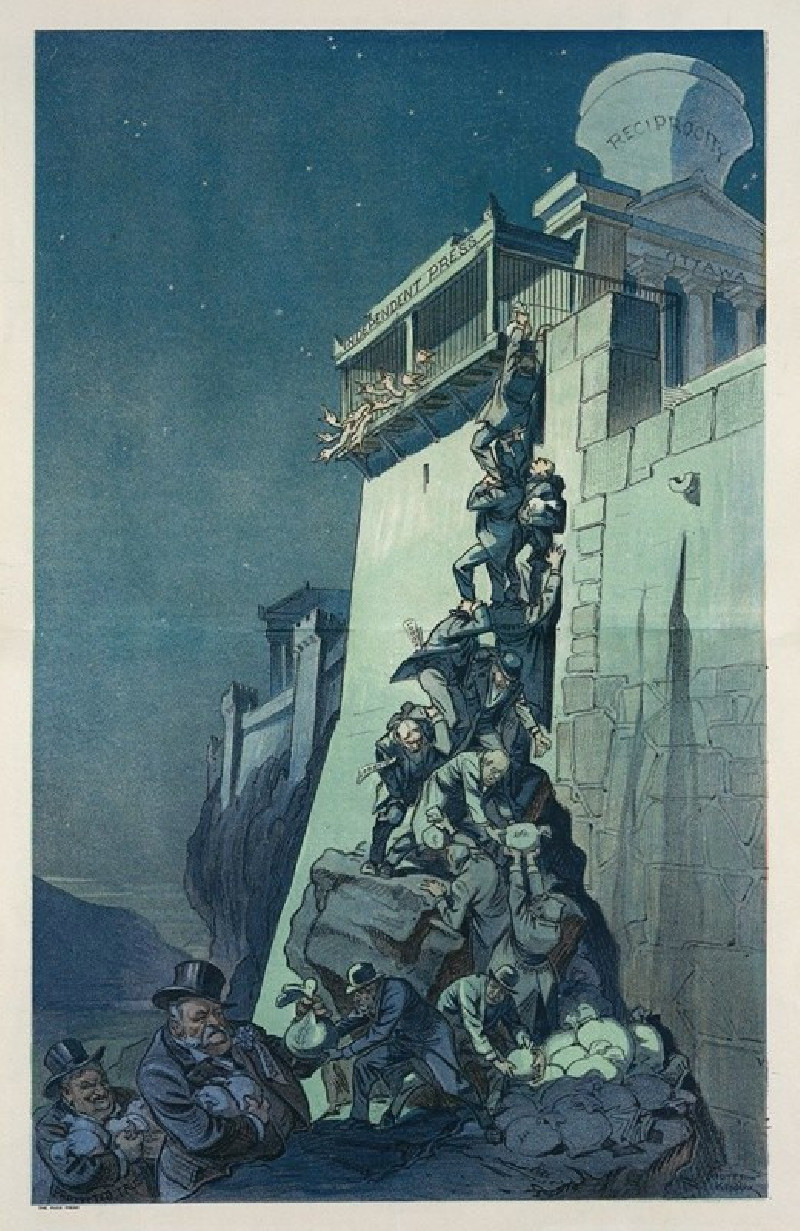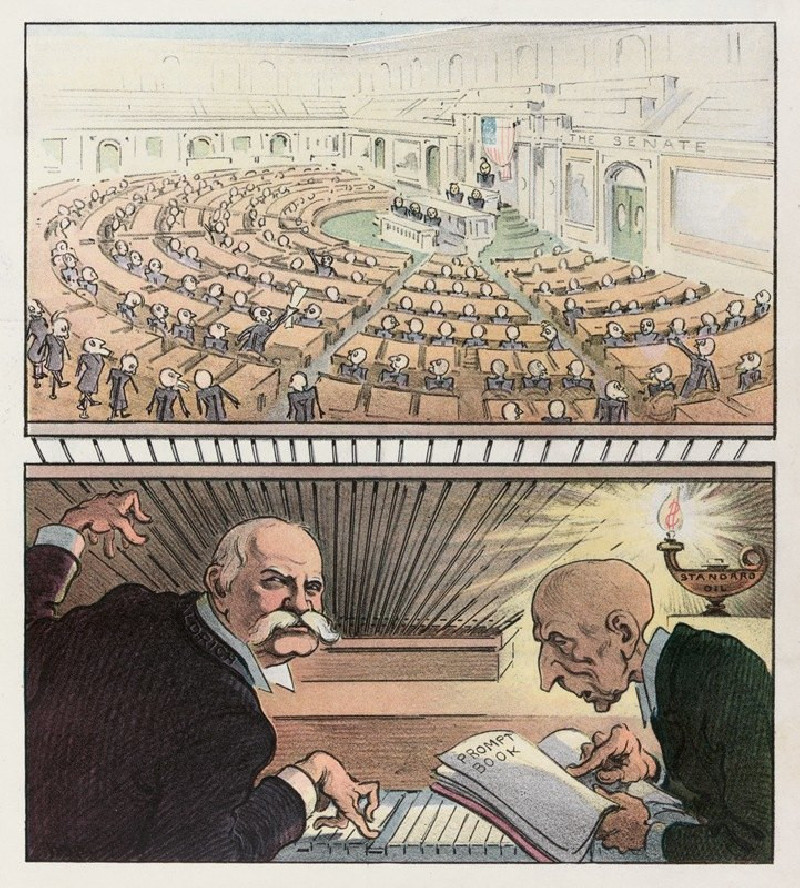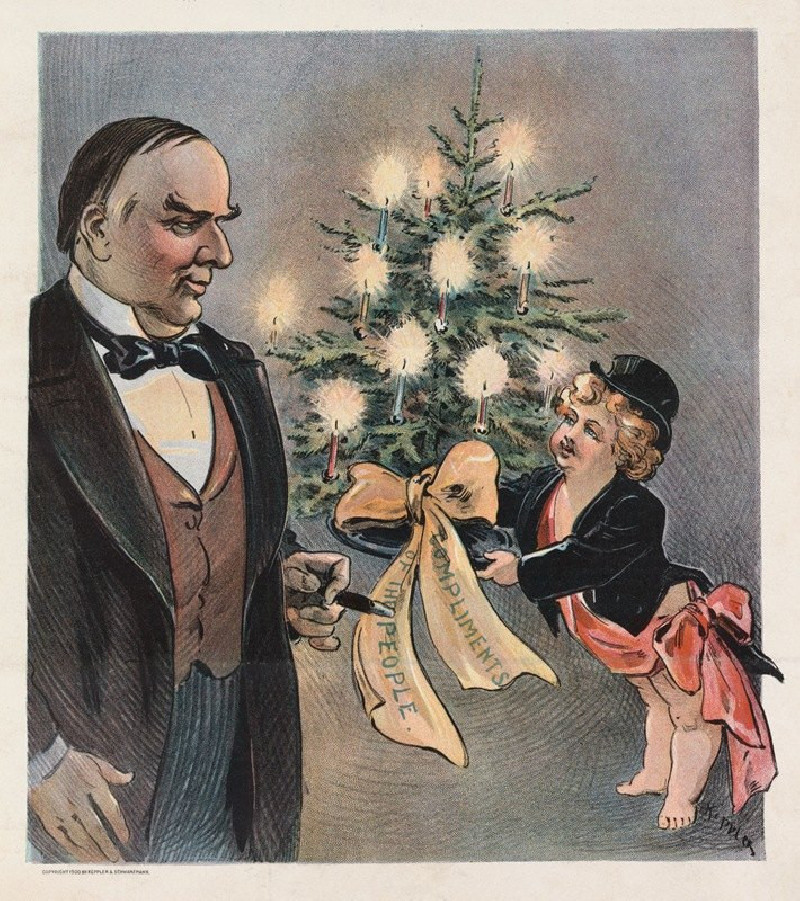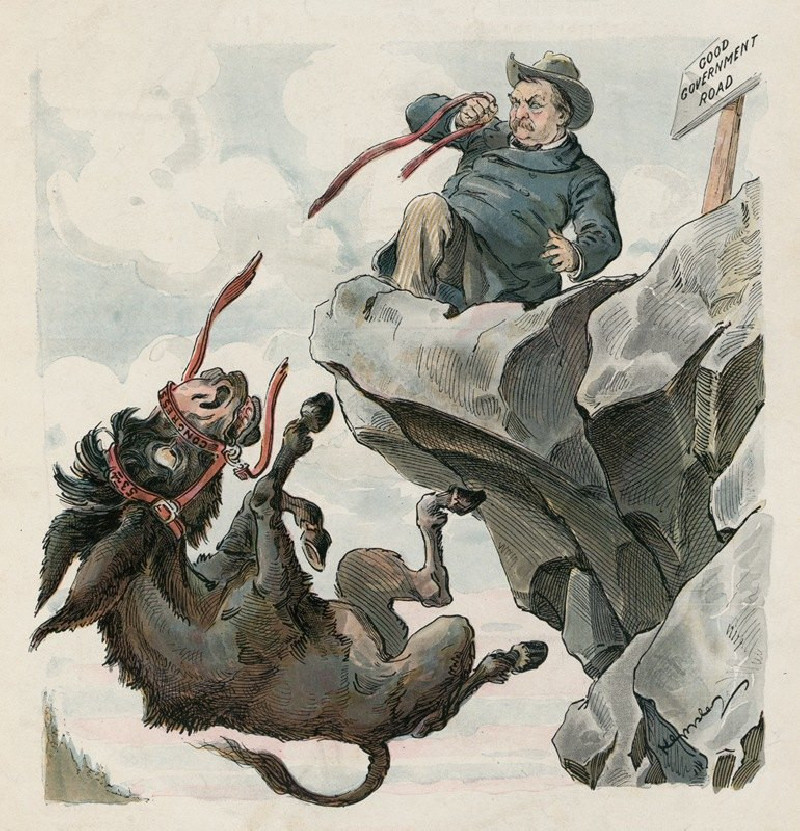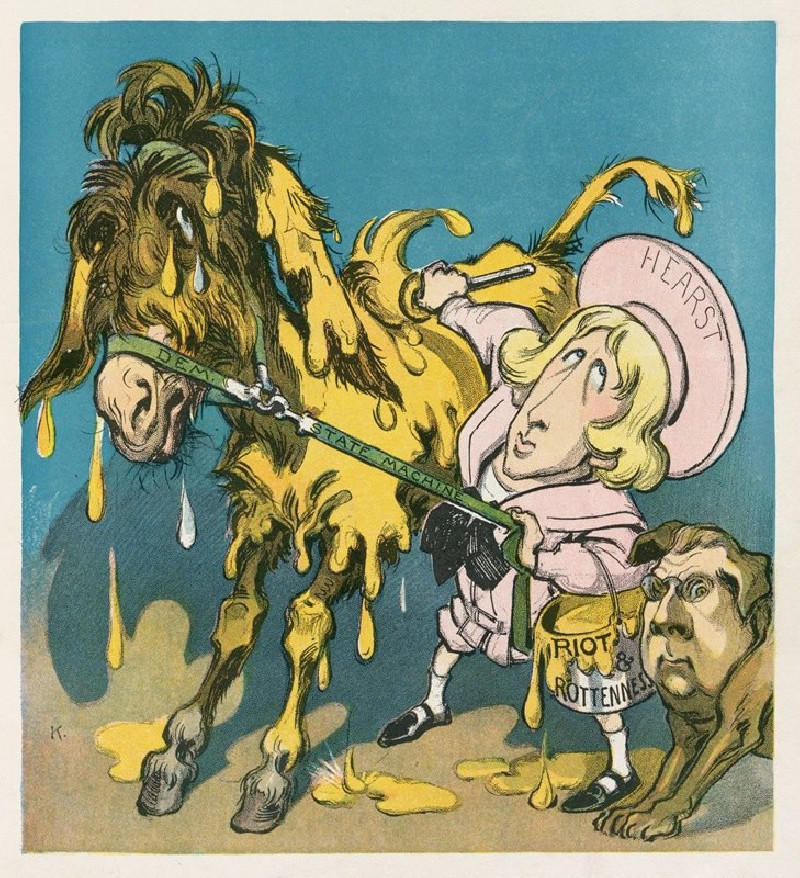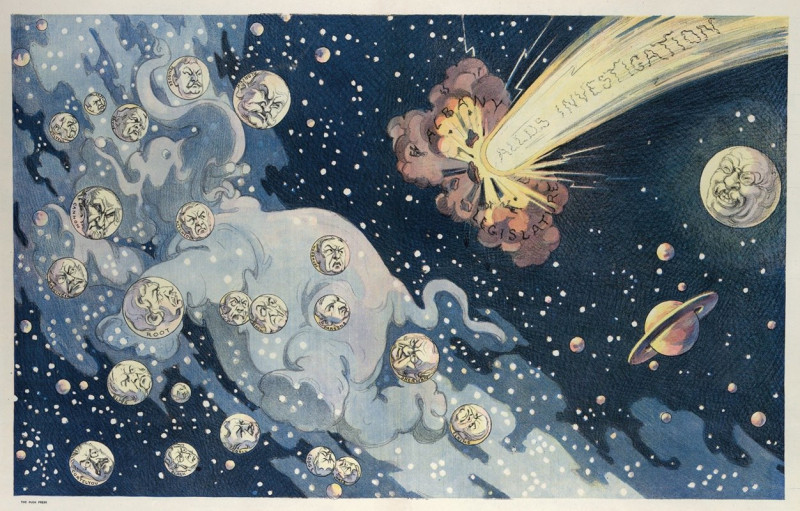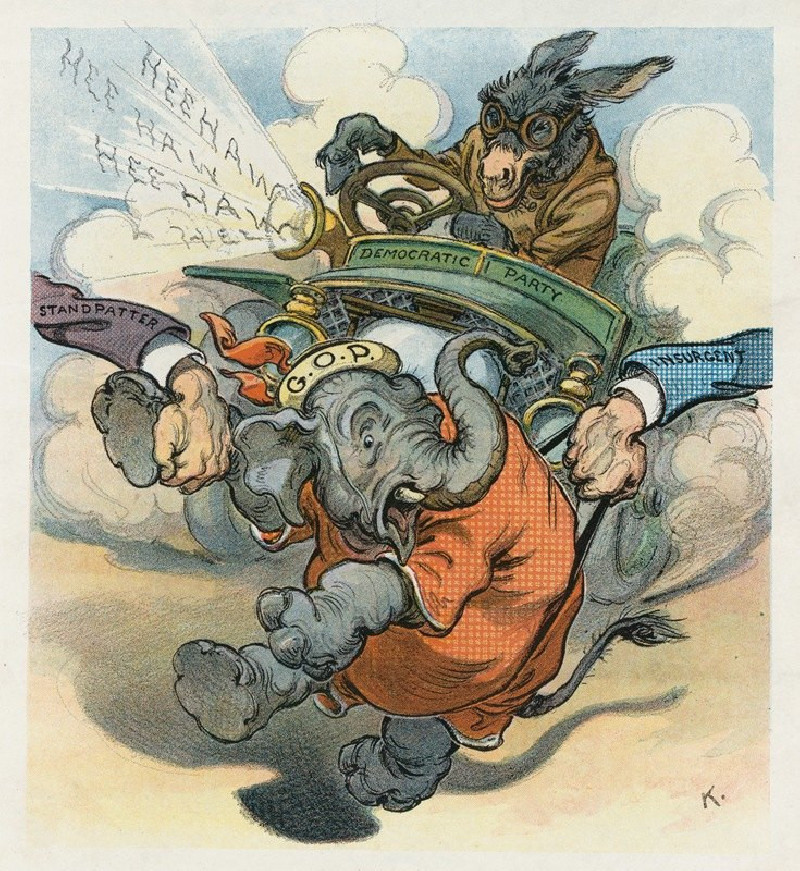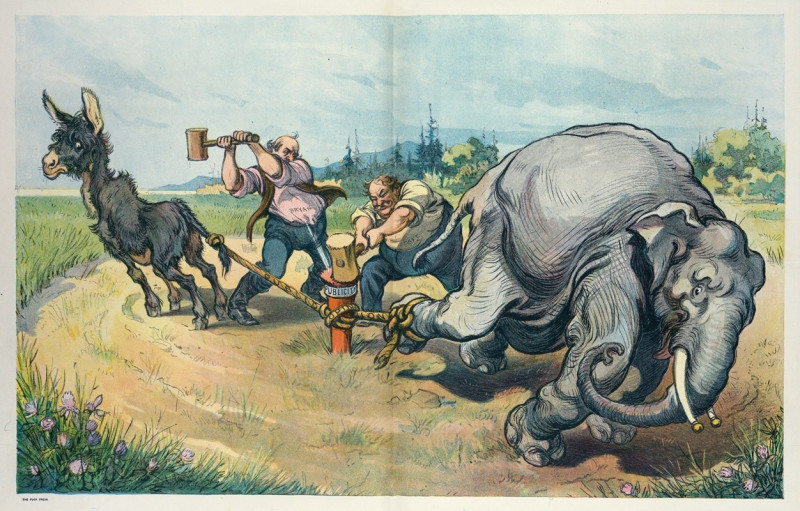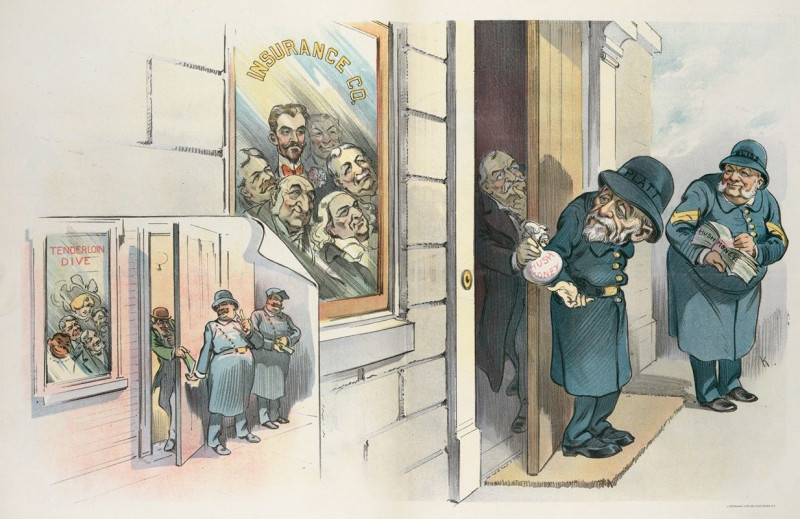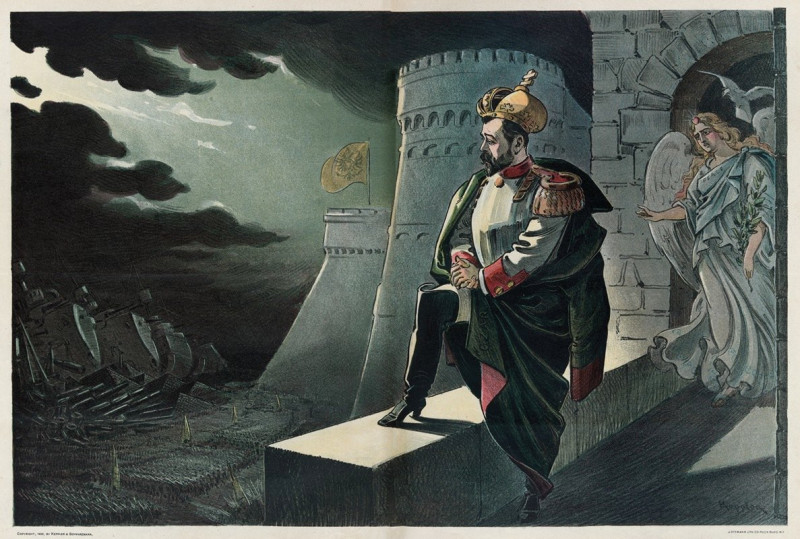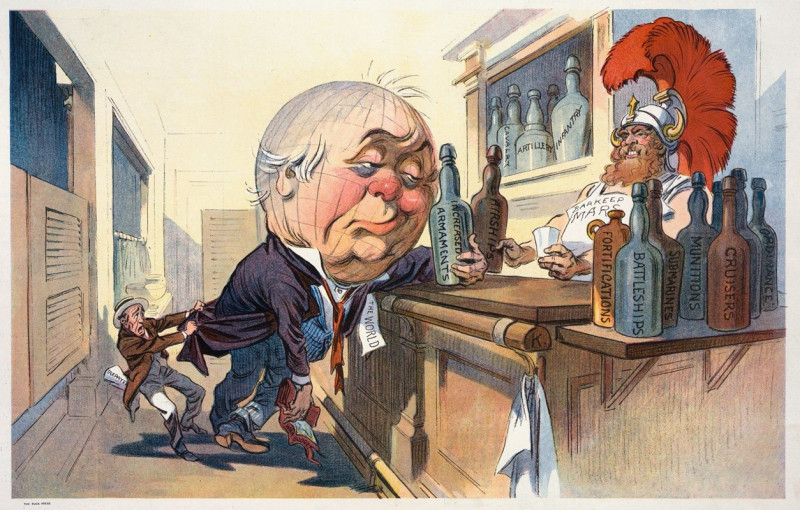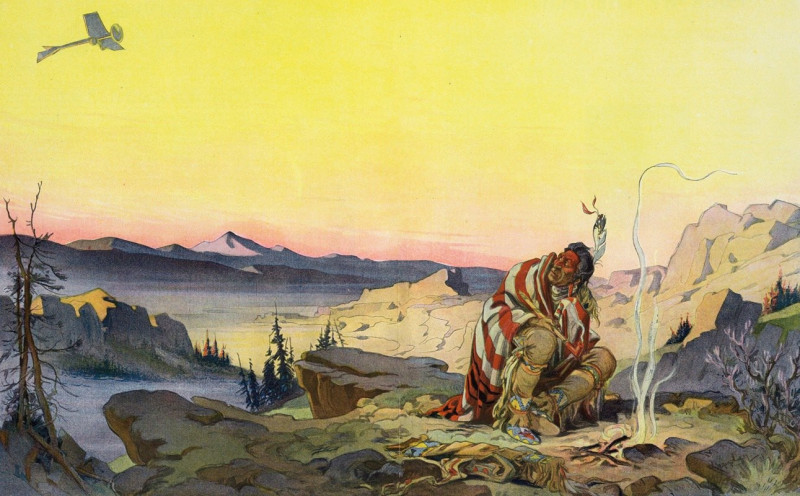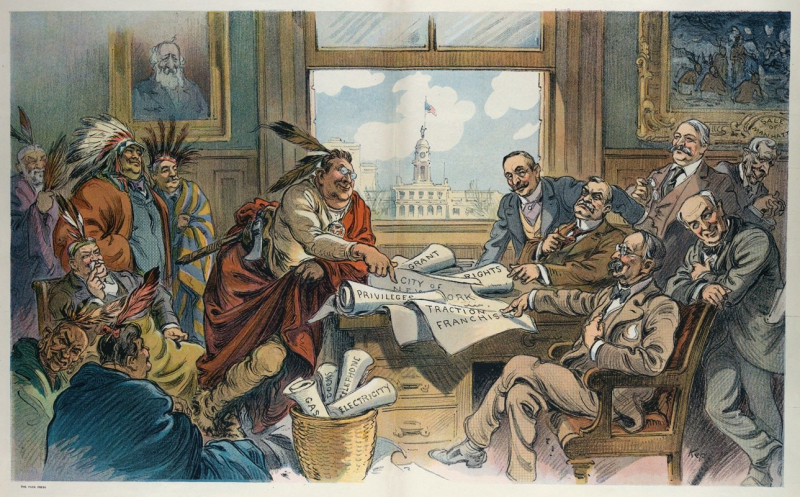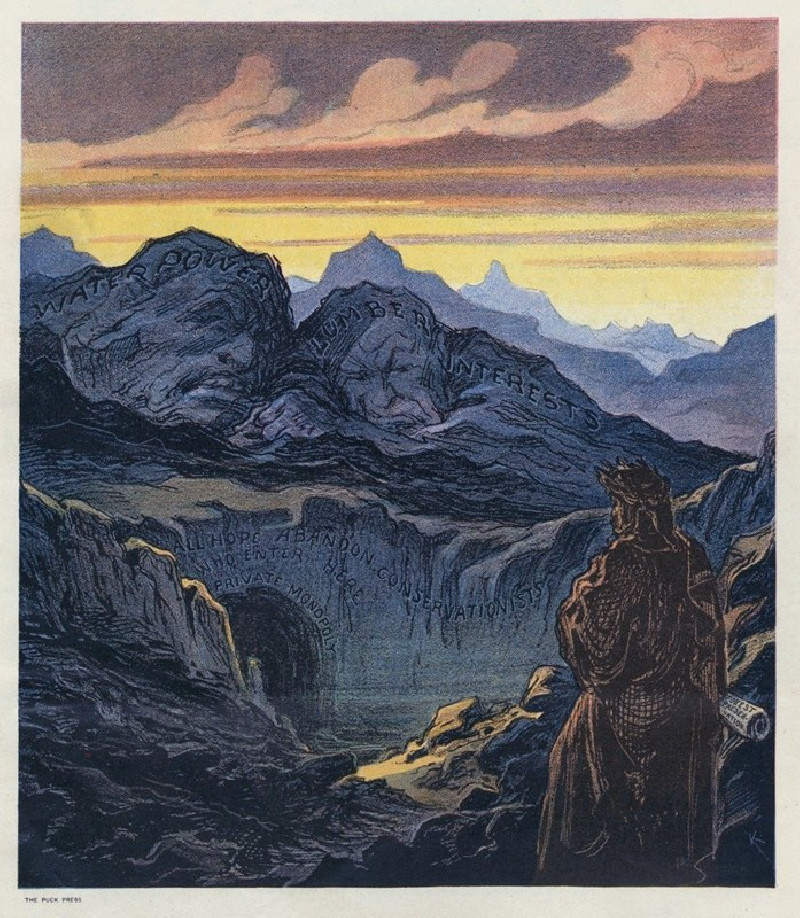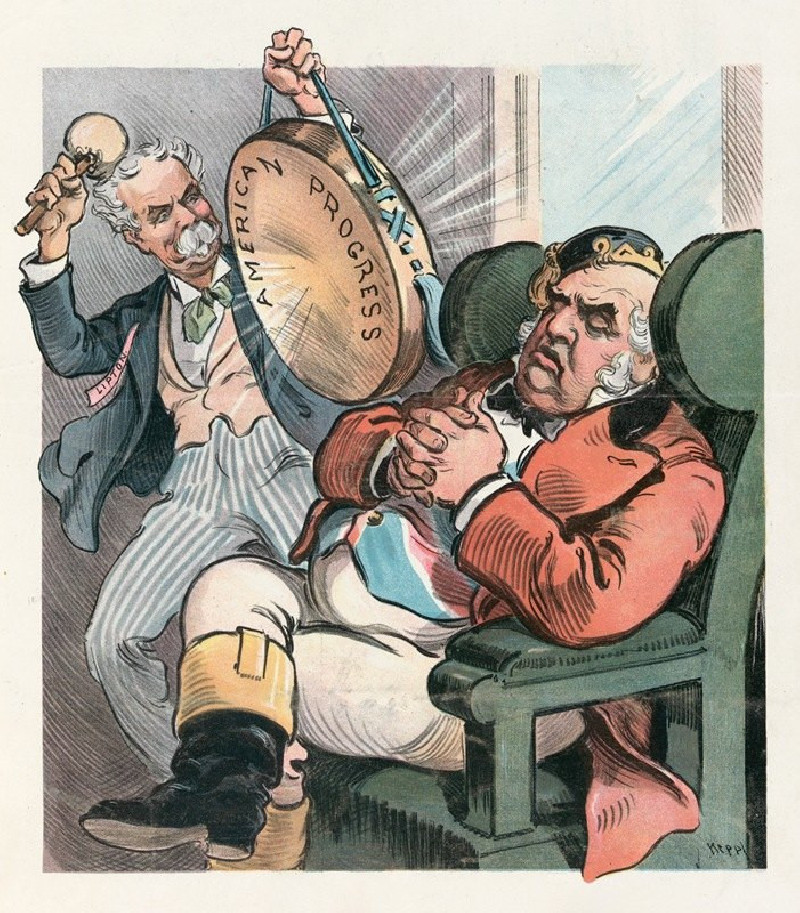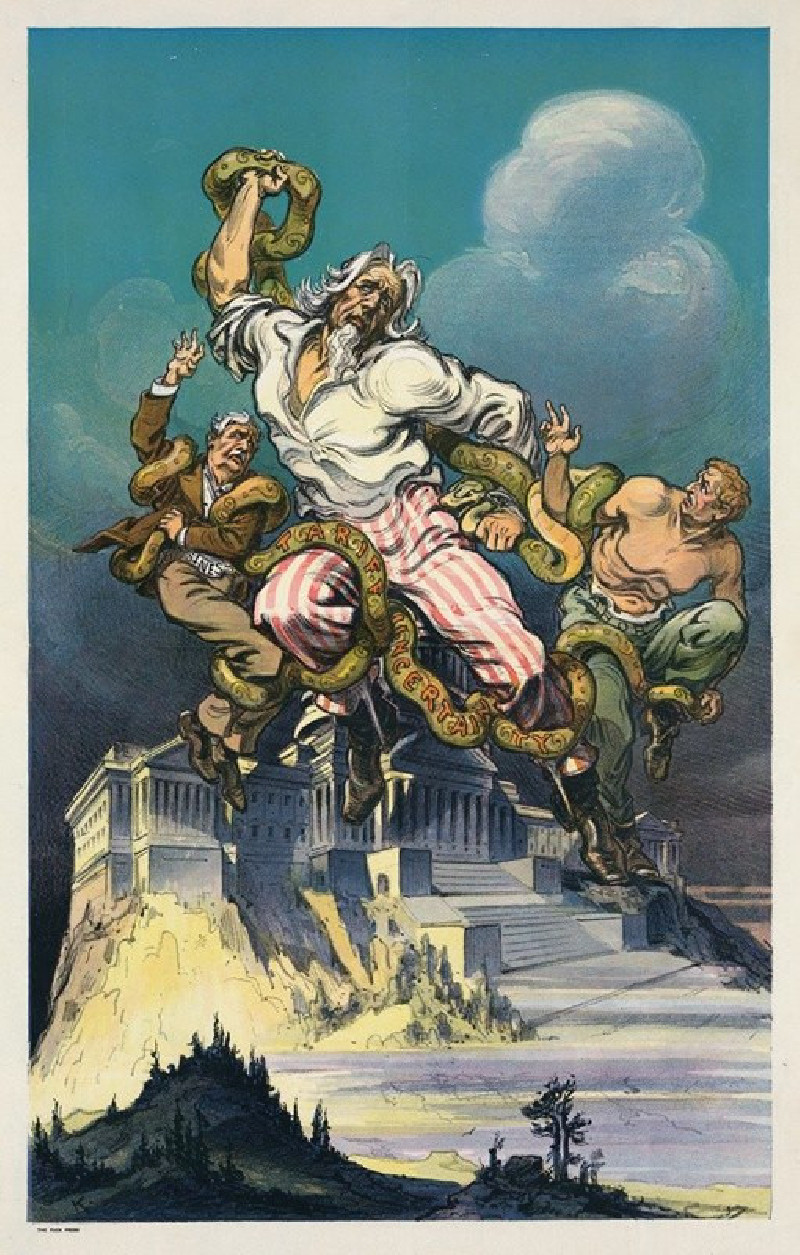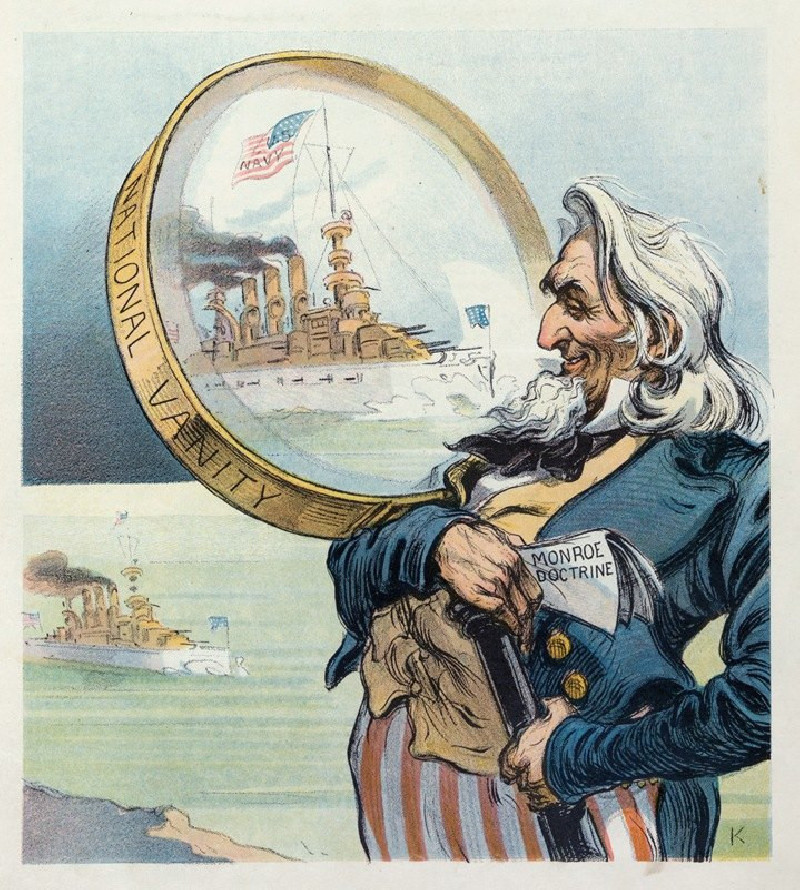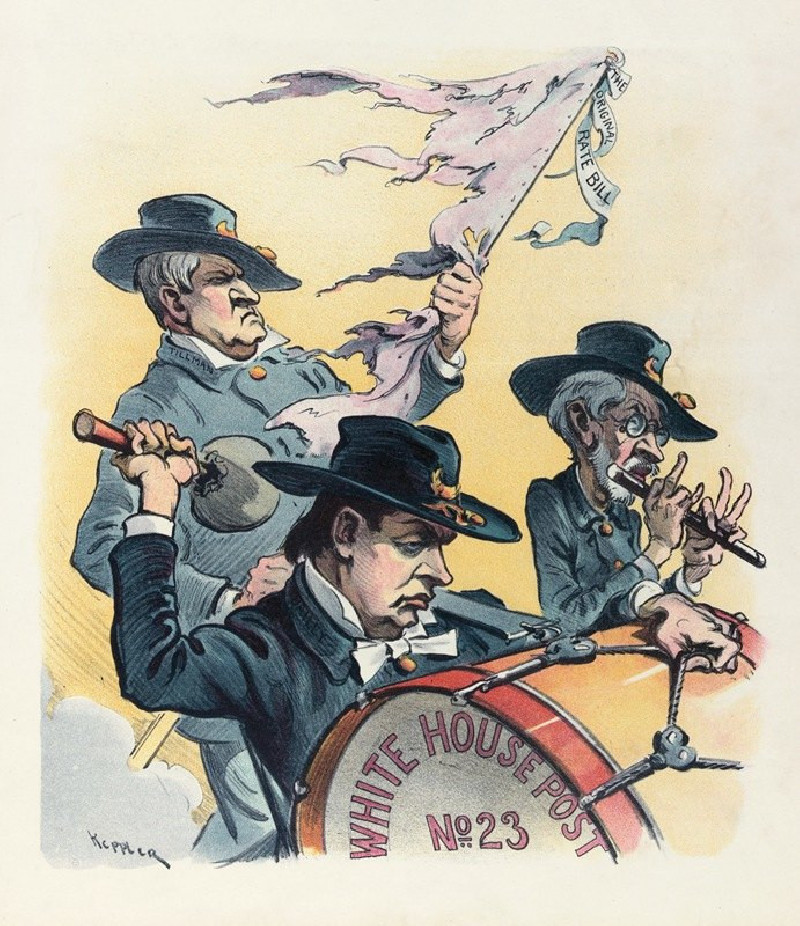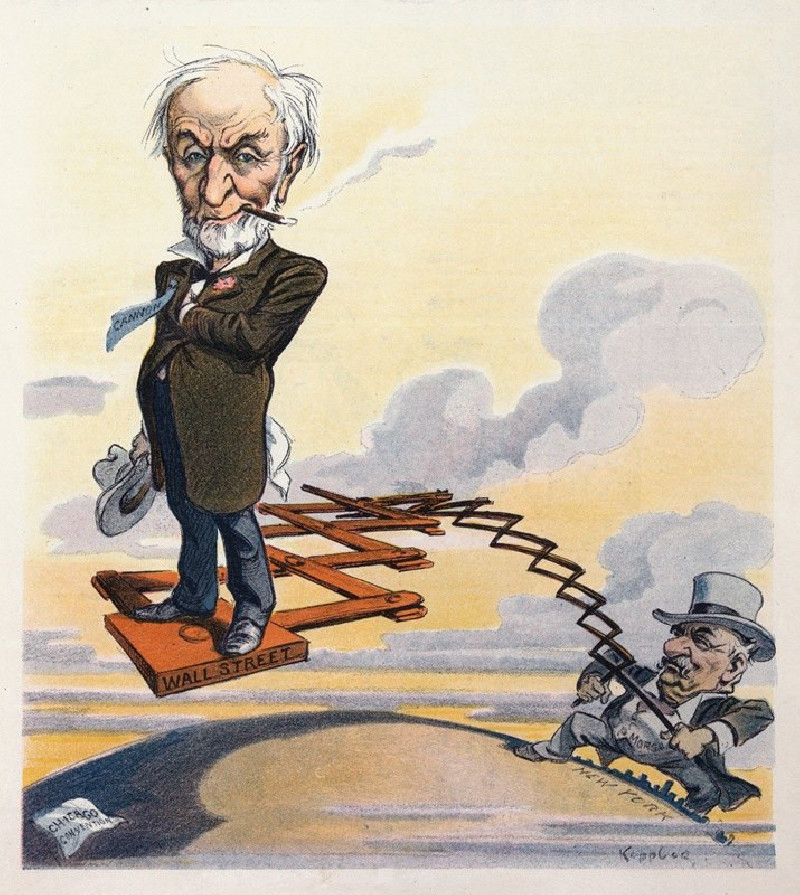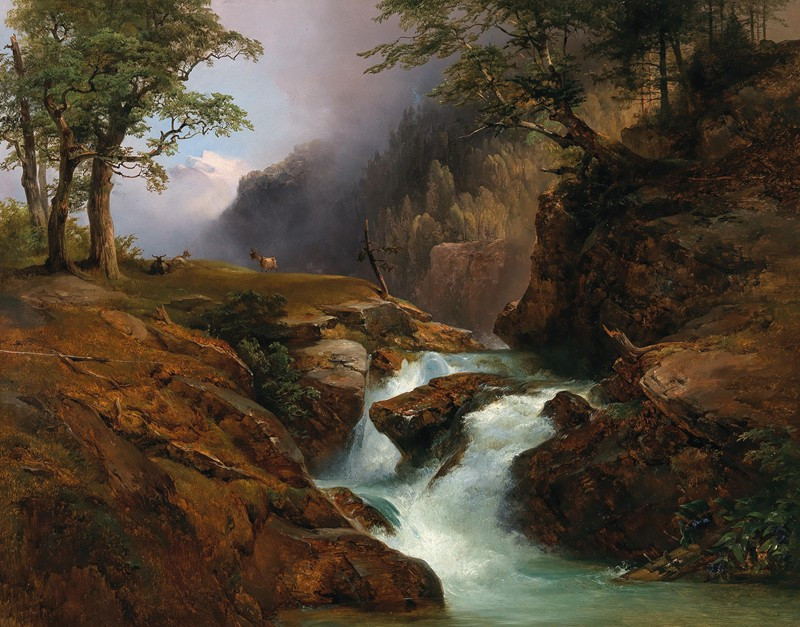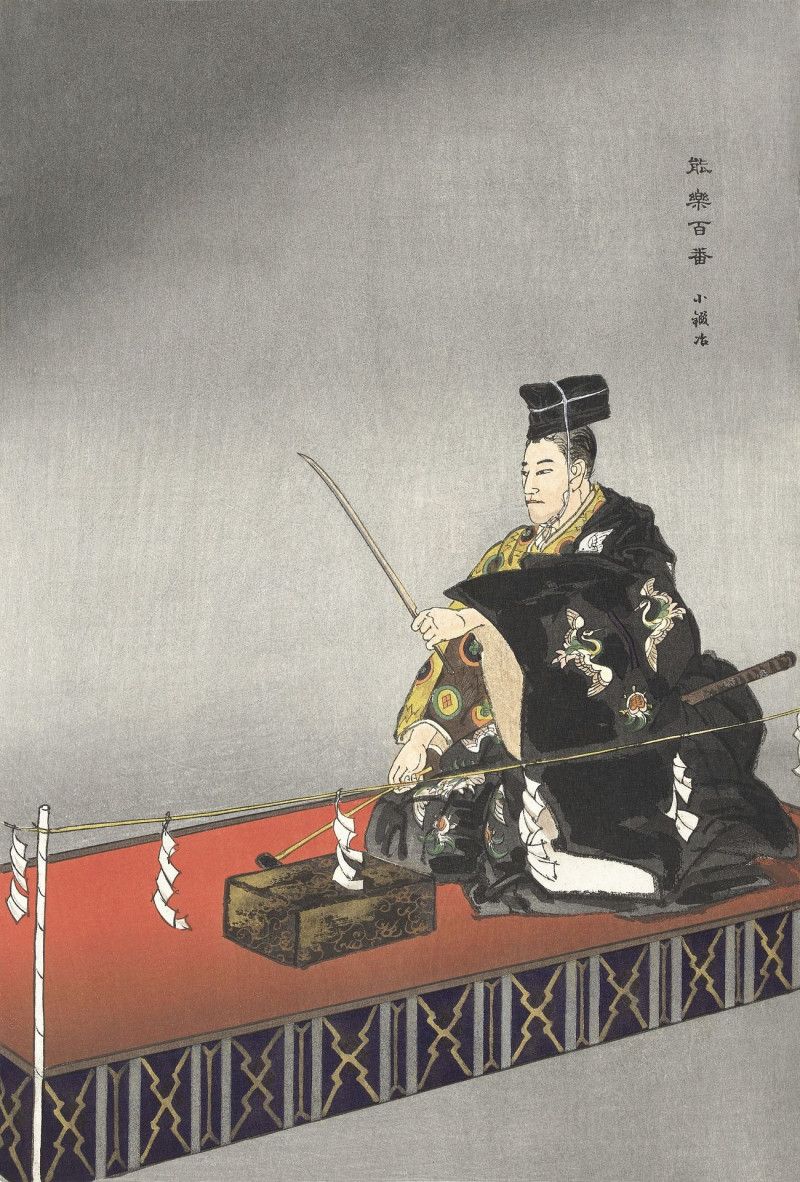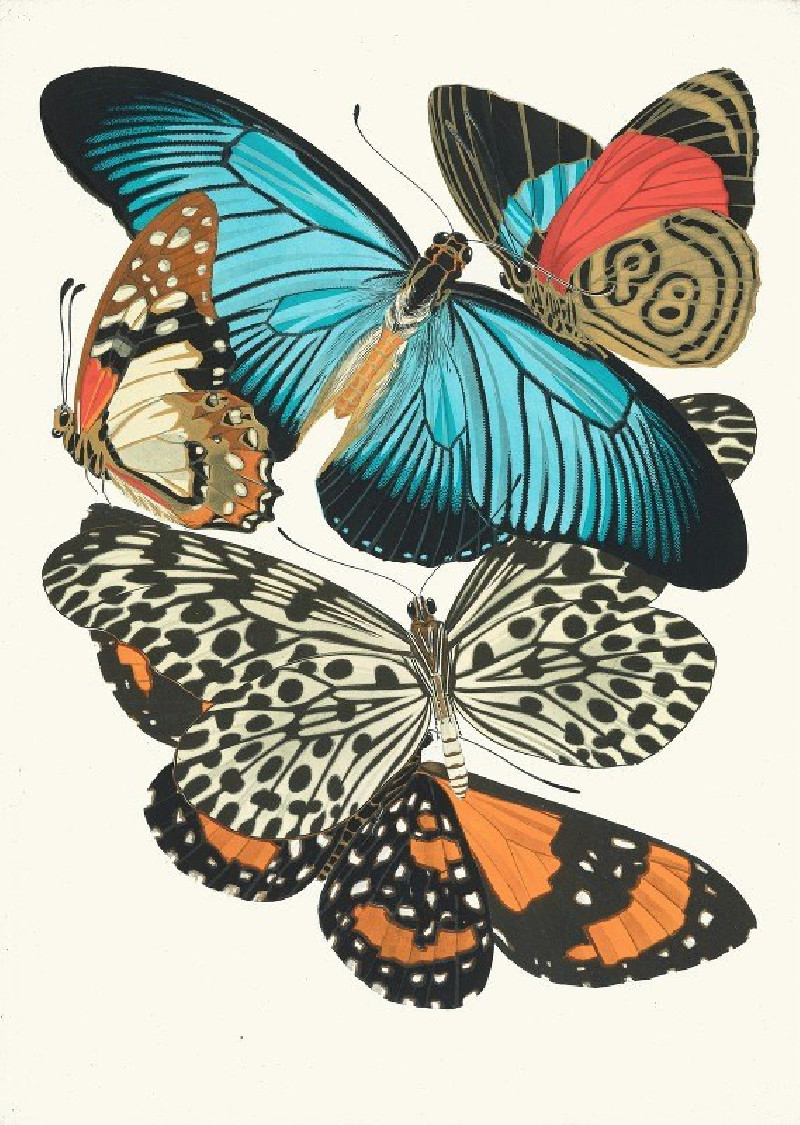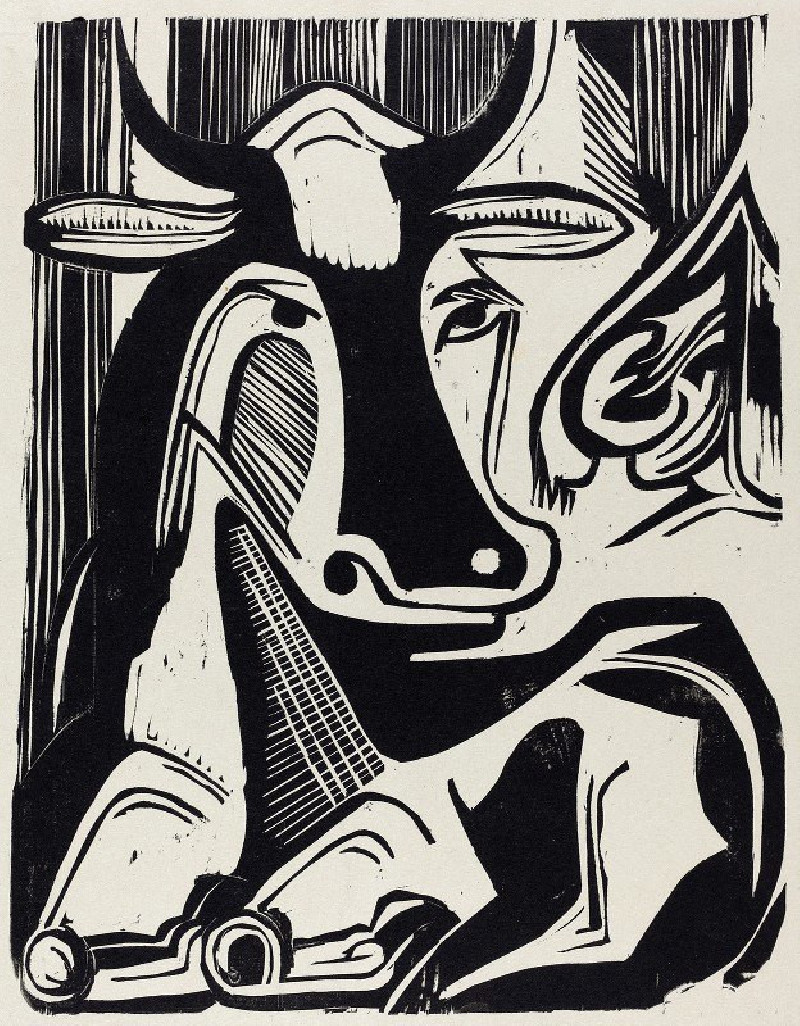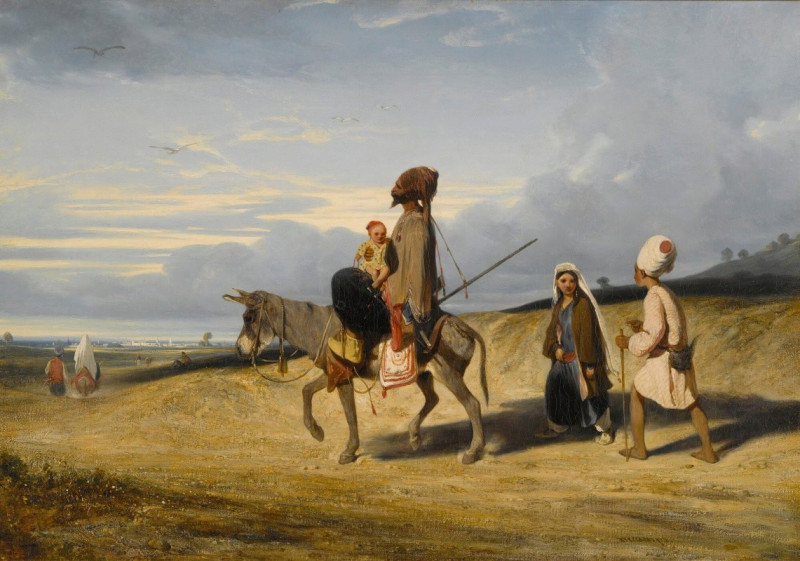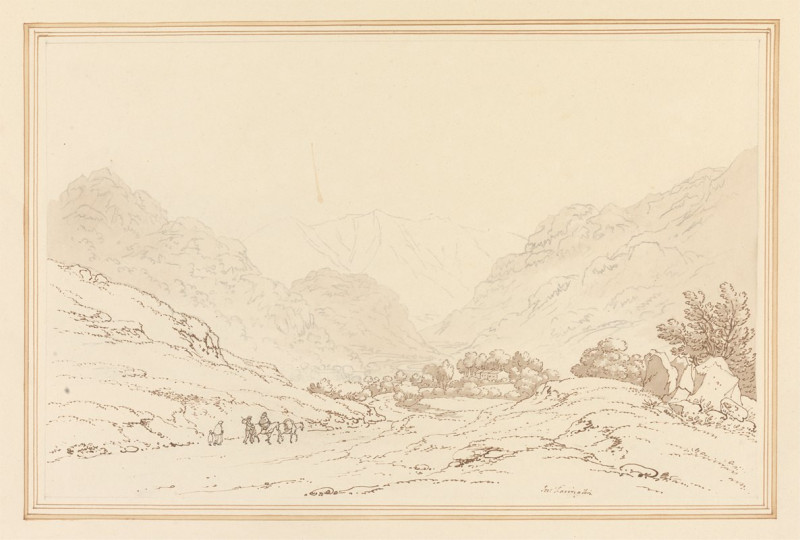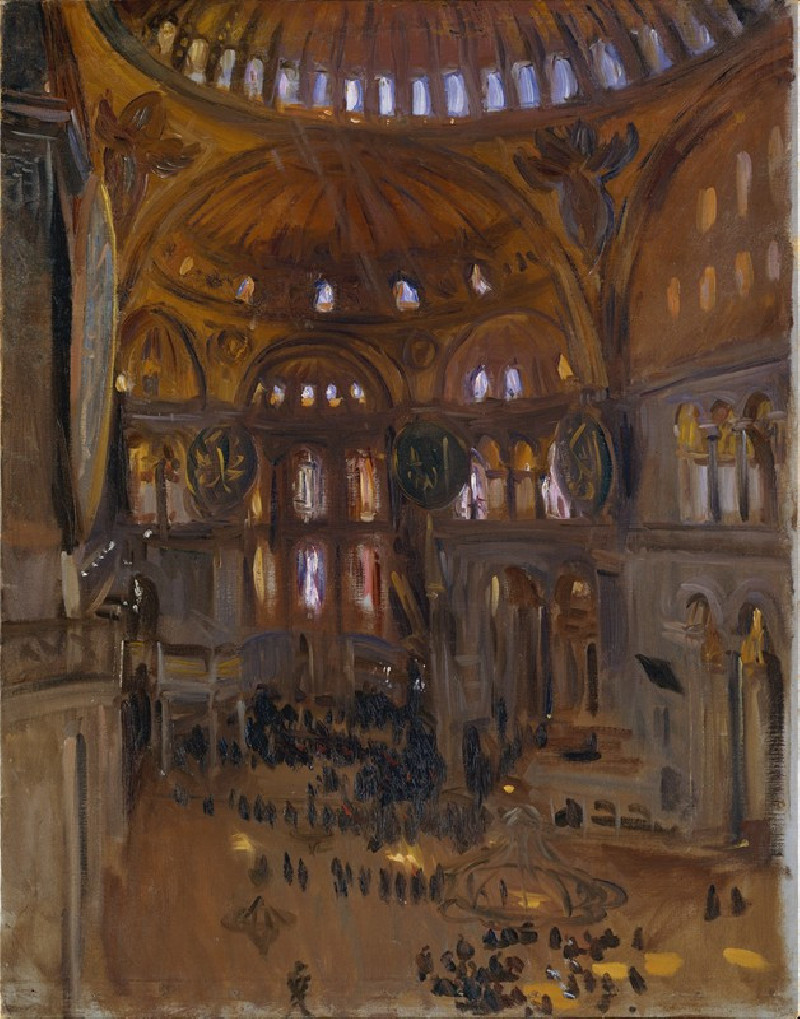The tariff triumph of pharaoh Wilson (1913)
Technique: Giclée quality print
Recommended by our customers
More about this artwork
This captivating artwork by Udo Keppler, titled "The Tariff Triumph of Pharaoh Wilson" (1913), is rich with allegory and symbolism, blending political commentary with ancient Egyptian artistic style. The painting embodies a satirical depiction pertinent to the era's political landscape, particularly focusing on tariff reforms.In the center, a figure styled after Woodrow Wilson, depicted as a Pharaoh, leads a triumphant procession. His dramatic attire and commanding pose reflect his powerful position. To his left, a warrior rides a donkey, humorously armed, signifying perhaps the domestic political battles fought over the tariff issue. The warrior carries an emblem with the word "WOOL," signifying a key commodity affected by tariff legislation.On the right, a diverse assembly of figures symbolizes international stakeholders or affected nations. Notably, a classical figure, representing perhaps an industry or country under strain due to the new tariffs, struggles against the weight of an elephant signifying the enormity of economic pressures or the heavyweight of opposing international opinions.Behind Wilson, a series of figures march uniformly, carrying shields with the "XXX" and "$" symbols, denoting the economic and financial implications of the tariff measures. Each character in the image plays a role in this allegorical representation of political strategy and its wide-reaching consequences.The use of vibrant colors and detailed, hieroglyphic-style borders adds to the historical pastiche, making it not only a visual treat but a thought-provoking piece on early 20th-century American politics.
Delivery
Returns
Udo J. Keppler, since 1894. known as Joseph Keppler, Jr., was an American political cartoonist, publisher, and Native American advocate. The son of cartoonist Joseph Keppler (1838–1894), who founded Puck magazine, the younger Keppler also contributed to cartoons, and after his father's death became co-owner of the magazine under the name Joseph Keppler. He was also a collector of Native American artifacts.

